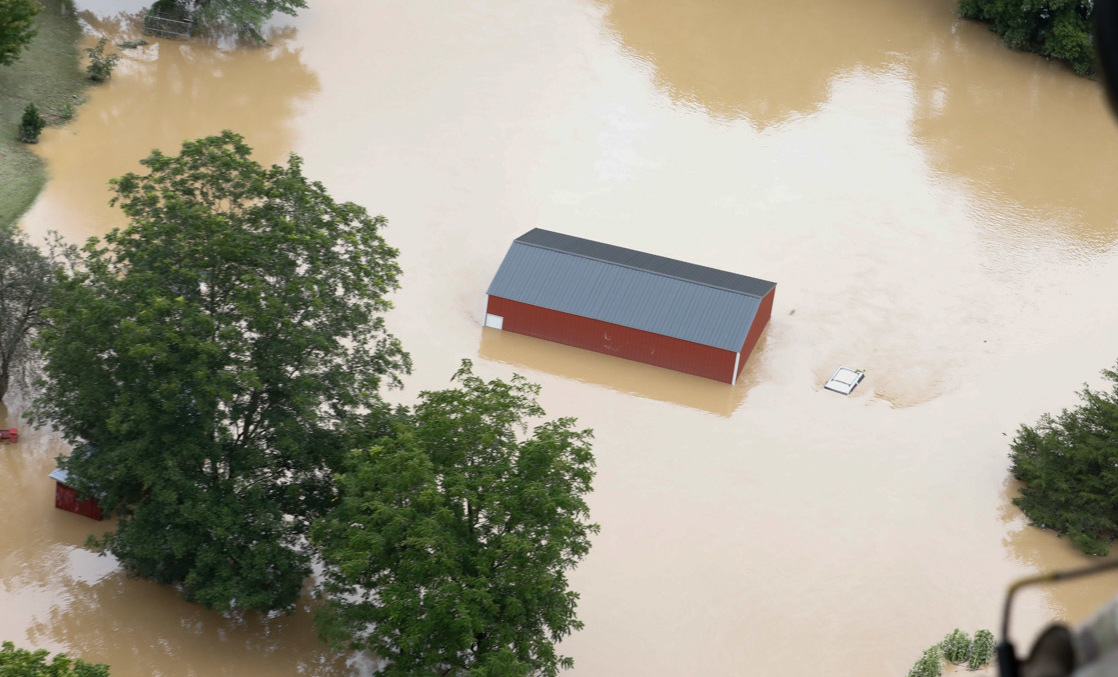From one disaster-prone state to another: Advice for funders

In the days before Kentucky’s massive flash flooding disaster, my colleague Austin and I held a CDP webinar planning call with Baylen Campbell, director of community impact at Invest Appalachia. Baylen, who has deep roots in Eastern Kentucky, told us a great deal about the hillbilly stigma, social inequities, culture and incredible assets and human resources of the people and communities in Appalachia.
We had no idea we would be reaching out less than a week later to offer support and learn more about community response efforts after a devastating disaster.
Days of heavy rains have led to flash flooding and overflowing rivers and streams. Entire towns went underwater. In Baylen’s hometown of Hazard, Kentucky, seven of nine bridges are inaccessible. Sheriff Joe Engle told CNN, “The storm ‘totally annihilated’ Perry County’s infrastructure … ‘Water, telephone, internet, electricity, all the basic roads, all the basic things you would build a community around have just disappeared’ … ‘There is a big swath of the county that’s totally isolated, the state highways are just totally gone.’”
Thousands of people have been affected. Hundreds have lost their homes and more than 37 deaths have already been reported. Many more communities are still yet to be searched. This is already a mass casualty incident – the second for Kentucky in seven months, following the tornadoes in Western Kentucky in December 2021. Many states go decades without having two events of this magnitude.
I live in Louisiana, where disasters occur frequently. Louisianans are experienced at flooding. Personally, I’ve responded to several flooding events, including the southwest flooding in 2012, the Great Flood of 2016 and post-hurricane floodings in 2012 (Isaac), 2020 (Laura/Delta/Zeta) and 2021 (Ida).
Here is my advice for funders wanting to help communities in Kentucky, based on those experiences:
- Balance your funding. The images we see right now are stark. Given the recent tornadoes in Western Kentucky, the state government, people and funders are likely to be overstretched and under-resourced. The location of the flooding in high-poverty communities means that the demand for immediate assistance will be quite significant. At the same time, the poverty and extent of the disaster mean that there will be enormous needs for years to come. Although Appalachia is full of rich natural resources, money doesn’t trickle down to the people who work the mines or live in the communities. They will need long-term support.
- Recognize local human capital. At the same time, as Baylen told Austin and me, there is incredible human and social capital in Appalachia. Mutual aid is a way of life as mountaineers help each other through tough times. Community organizing is strong and embedded in the fabric of non-governmental organizations. Outside wealth and investments are desperately needed, but let the locals lead the recovery.
- Build capacity. High levels of poverty mean under-resourced community organizations. A disaster of this magnitude increases the demand for services. In floods I’ve responded to in Louisiana, I saw local organizations with one part-time staff member (if they even have one) bear the brunt of widespread demands for day-to-day survival. Help provide staffing and administrative support for those local organizations based in the community that will be there for years to come. Help the local community foundation build up its staff and disaster response efforts as well.
Appalachia is one of the most unique places in America. Let’s ensure this disaster doesn’t transform it negatively. Share on X
CDP staff is available to help guide you to local responding organizations and funds. Our disaster profile is available for you to think about how to use your resources wisely. Through our Disaster Recovery Fund (select 2022 Central Appalachia Flooding), we steward your donations toward supporting long-term equitable recovery.
